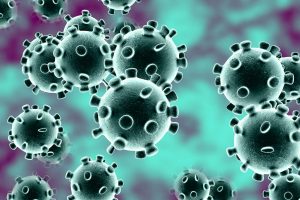Virology Detection
Virology Detection:
Effective devices for rapid screening of pathogens and viruses have always been major issues throughout the world and with the emergence of the worldwide Coronavirus epidemic, technology developments for concurrent and rapid screening of these pathogens / viruses have become an increasing important requirement.
In order to address these issues, our research and development team led by Rajendra Joshi, are working on protocols to develop a graphene based smart detector for pathogen detection. Our systems are being designed to detect viral pathogens, including the COVID-19 virus in under a minute.
Our research team using similar protocols and equipment have already conducted several successful earlier trials to detect E.coli, Salmonella, water and food bound pathogens. Based on this system we can develop diagnostic platforms that can greatly enhance the prevention and control of infectious diseases.
Development of a practical monitoring:
Development of a practical monitoring method for viral pathogens is important not only for prevention of a pandemic, such as coronavirus, but also for early detection of oncogenic viral infections. By the modern diagnostic methods, it is possible to detect the presence of a human infectious virus only when the symptoms appear in the infected people, e.g., a cough and fever. These symptoms may manifest themselves too late for prevention of fatal effects of the infection. The mainstream methods for diagnosis are based on the detection of viral antigens and/or nucleic acids of viruses, but they generally require specialized equipment and trained personnel. To reduce the costs and time, some emerging diagnostic assays have been developed, such as a proximity ligation assay, biosensor-based methods, fluorescence resonance energy transfer-based methods, microarray assays, and in particular, nanoparticle-based techniques.
Raman spectroscopy is a powerful tool for studying reactions in intact live cells. The Raman analysis proposed here offers an opportunity to detect unknown human infectious viruses in the absence of human patients. It works on cultured human cells and indicates the presence of a virus within a short period. Because Raman analysis can detect virus infection in a single cell, analysis can be conducted with fewer virus particles than the minimal accessible number of virus particles during a clinical infection.

